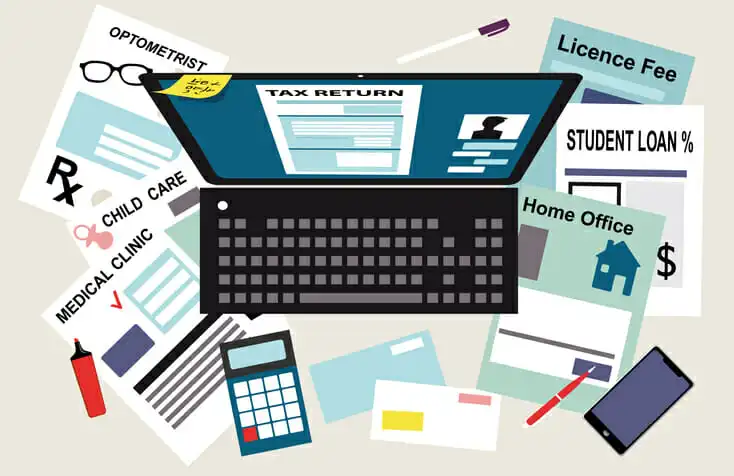A sole proprietor or self-employed person can receive some of the dependent-care benefits available to employees through cafeteria plans by setting up a Dependent Care Assistance Program. These are funded entirely by the business, unlike cafeteria plans that allow employees to contribute to them with pre-tax payroll deductions. That means sole proprietors can’t reduce their taxable salaries by the amount of the contributions. Otherwise, the rules for the two types of benefit programs are similar. To learn more about your options for funding dependent care, talk to a financial advisor.
DCAP Basics
Many businesses offer cafeteria plans as benefits to employees. These let workers elect to make pre-tax payroll deductions to pay for things like medical care and premiums for health and life insurance. Paying with pre-tax dollars gives employees substantial savings averaging 30% on eligible costs by avoiding income and payroll taxes. In addition to the employee’s contributions, an employer can also make contributions to a cafeteria plan.
Dependent care costs are included as part of many cafeteria plan benefits. When offered to employees as part of a cafeteria plan, a dependent care plan is set up as a Dependent Care Flexible Spending Account (DCFSA). As the owner, however, a sole proprietor or self-employed person can’t participate in a cafeteria plan like an employee.
One possible solution for sole proprietors and self-employed individuals is a Dependent Care Assistance Program (DCAP). These are often lumped in with DCFSAs, and they address the same dependent care cost issues, but they are set up differently from a standard cafeteria plan so that business owners can participate in them.
The primary difference with a regular DCFSA is that the DCAP is entirely funded by contributions from the employer. That means the proprietor can’t elect to make pre-tax contributions to reduce his or her salary, although he or she does still receive a valuable fringe benefit.
A proprietor’s DCAP can be set up separately from a cafeteria plan. Or a business can have one plan that lets employees contribute pre-tax while the owner’s contributions come from the business. But the different ways of funding the plan have to be explained in the DCAP documents.
Dependent Care Plan Details

Aside from the restrictions on pre-tax contributions, a DCAP functions much like a DCFSA. With regard to qualified dependents, eligible expenses, maximum contributions and the use-it-or-lose-it feature, for instance, they are similar.
A qualified dependent must live with the proprietor and be age 12 or younger. An older dependent, including an elder or disabled spouse, can qualify if the person is mentally or physical incapable of caring for themselves, and typically spends at least eight hours each day in the proprietor’s home. The person also has to be claimed on the proprietor’s tax return as a dependent.
Expenses eligible for reimbursement have to be of a sort that allows a proprietor or spouse to work, look for work or go to school full time. Beyond that, eligible care can consist of many types, including:
- Preschool or nursery school
- Care in a childcare center or family care home
- In-home nanny or babysitter
- Before- and after-school care
- Day camp for summers or holidays
Some similar expenses are, however, generally ineligible for DCAP reimbursement. These include kindergarten, overnight camp, summer school tuition and most lessons, such as music lessons. Food, clothing and healthcare expenses also cannot be reimbursed by a DCAP.
A DCAP can receive no more than $5,000 in contributions from the company per year. To get reimbursed, the proprietor must submit receipts and must incur expenses equal to all the money in the account before the end of the year, or lose whatever is left.
One difference with DCFSAs, there is no way to roll over any DCAP funds in the account to the next year. However, depending on the plan, there may be a 2 1/2 month grace period after the end of the year during which receipts for expenses incurred during the previous year may be submitted for reimbursement.
The paperwork involved in setting up a DCAP can be complex. A sole proprietor or self-employed person who wants to set one up can get help from insurance brokers, payroll services, professional employer organizations and benefits consultants.
Bottom Line

A DCAP can allow a sole proprietor or self-employed person to get some of the dependent-care benefits available to employees who can use a cafeteria plan. A proprietor can only use company contributions to fund the DCAP, instead of using contributions that reduce taxable income as employees can. DCAPs can pay for many types of care for qualified dependents, including preschool, babysitters and summer camp, in order to allow proprietors or their spouses to work or go to school. However, DCAPs can be difficult to set up and administer.
Tips for Tax Planning
- A financial advisor can help you with all your important financial decisions to fund dependent care. SmartAsset’s free tool matches you with up to three vetted financial advisors who serve your area, and you can have a free introductory call with your advisor matches to decide which one you feel is right for you. If you’re ready to find an advisor who can help you achieve your financial goals, get started now.
- If you don’t know whether you’re better off with the standard deduction or an itemized deduction, you might want to read up on it and do the math. You could save a significant amount of money by educating yourself before the tax return deadline.
- Tax regulations generally rule out deductions for expenses that benefit a taxpayer or member of the taxpayer’s family. DCAPs follow this rule as well. Payments for babysitting or other care that is provided by a dependent, such as a spouse or child under 19, aren’t eligible for reimbursement from the DCAP.
Photo credit:©iStock.com/Milan_Jovic, ©iStock.com/damircudic, ©iStock.com/Aleutie
